The Economics and Statistics Division maintains archives of previous publications for accountability purposes, but makes no updates to keep these documents current with the latest data revisions from Statistics Canada. As a result, information in older documents may not be accurate. Please exercise caution when referring to older documents. For the latest information and historical data, please contact the individual listed to the right.
<--- Return to Archive
For additional information relating to this article, please contact:
December 16, 2021NOVA SCOTIA QUARTERLY POPULATION ESTIMATES AS OF OCTOBER 1, 2021
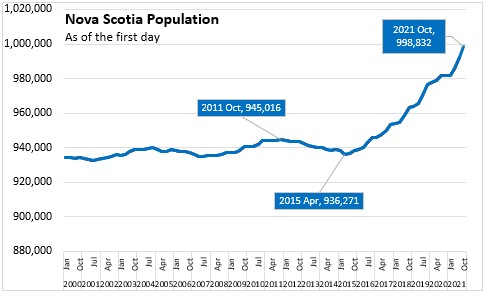
Nova Scotia’s population increased by 6,777 (0.7%) between July 1, 2021 and October 1, 2021. This was the fastest quarter of growth in comparable population records dating back to 1971.
The population as of October 1, 2021 was 998,832, the highest population for Nova Scotia on record. Since April 1, 2015 Nova Scotia's population has increased by 62,561.
Population growth from July 1, 2021 to September 30, 2021 reflects higher immigration, net non-permanent residents as well as strong net interprovincial migration (though not as much as reported between April 1, 2021 and June 30, 2021).
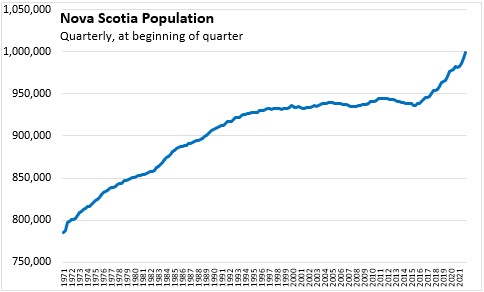
There are seasonal patterns in quarterly population changes, particularly evident in births and migration. From July 1 to September 30 2021, Nova Scotia posted a population increase even faster than the increases in the same period from recent years.
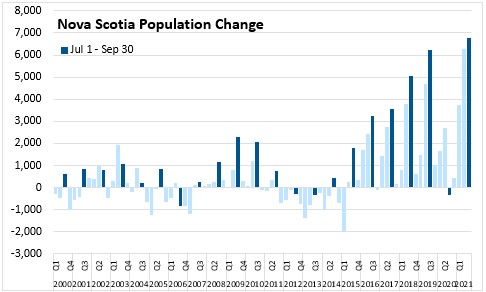
From July 1 to October 1, Nova Scotia’s population increased 0.68%, while the national population grew 0.50%. Compared with October 1, 2020 Nova Scotia’s population increased 1.76% (+17,280), while the national population grew by 1.06%.

Immigration from other countries has been a strong contributor to population growth in Nova Scotia in recent years. While immigration slowed during periods of border restrictions over the course of the COVID-19 pandemic, there was a strong resurgence of immigration to a new high of 3,010 in the quarter from July 1 to September 30. This eclipses the recent high of 2,469 in the same quarter of 2019.
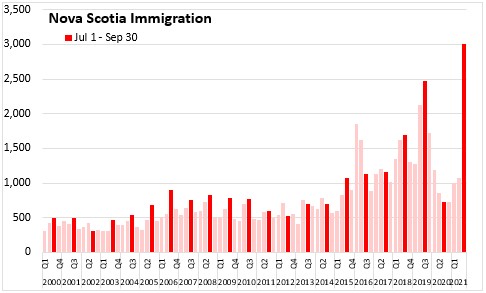
As with immigration, the flow of non-permanent residents slowed during the periods of tightest restrictions during the COVID-19 pandemic. From July 1 to September 30 2021, Nova Scotia saw a net gain of 1,723 non-permanent residents.
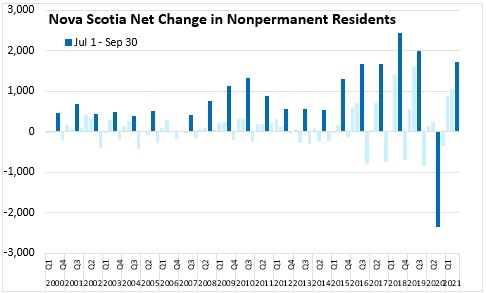
Nova Scotia’s natural population change (the number of births less the number of deaths) has been negative for several years. Between July 1, 2021 and September 30, 2021, there were 2,012 births and 2,272 deaths, amounting to a natural population decline of 260. The number of deaths recorded in this period declined from the number reported in the same period of 2020 - contributing to a slowdown in Nova Scotia's natural population decline.
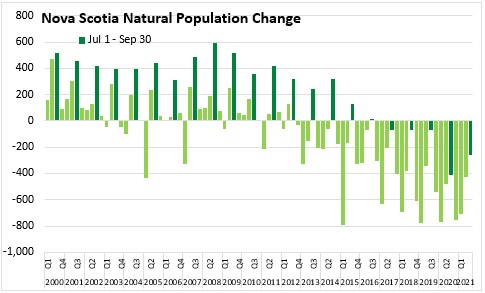
Nova Scotia posted another net increase in interprovincial migration with a gain of 2,496 persons between July 1 and September 30, 2021. There were 6,278 in-migrants and 3,782 out-migrants to other provinces and territories. Although this is a strong interprovincial population gain, it falls below the record gain of 4,678 interprovincial migrants reported from April 1 to June 30, 2021.
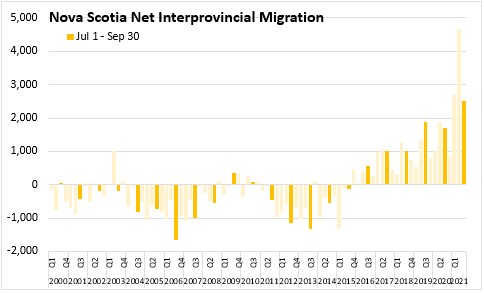
Out-migration from Nova Scotia to other provinces increased by 1,238 in July 1 to September 30, 2021 compared with the same period in 2020. Out-migration increased in all provinces except Manitoba and Saskatchewan, as well as the aggregate of the three Territories. The largest increases in out-migration were to British Columbia and Alberta.

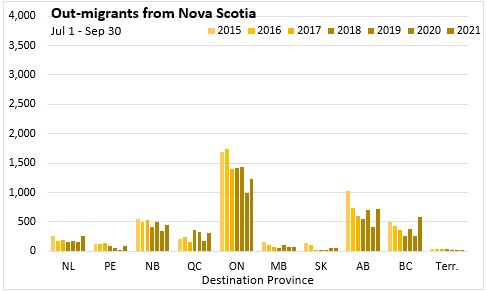
The number in-migrants to Nova Scotia increased by 2,035 comparing the July 1 to September 30 period of 2021 against the same months in 2020. The largest increase of in-migration was reported from Ontario. There was slower in-migration to Nova Scotia from Newfoundland and Labrador, Prince Edward Island, Manitoba, British Columbia and the Territories (in aggregate).
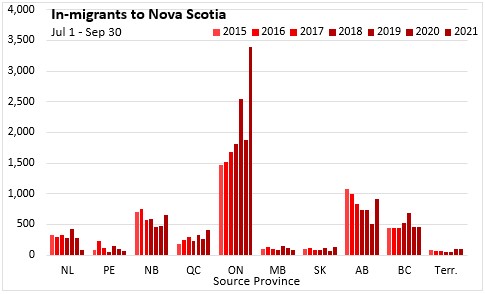
Interprovincial migration to Nova Scotia was a net inflow of 2,496 persons in from July 1 to September 30, 2021 (including the territories). The largest net inflows were from Ontario (+2,150) and New Brunswick (+205). There were net outflows to Newfoundland and Labrador (-168), British Columbia (-134) and Prince Edward Island (-17).
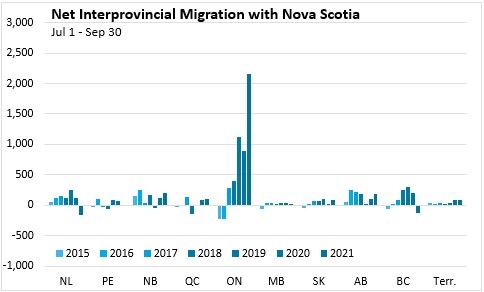
Source: Statistics Canada. Table 17-10-0009-01 Population estimates, quarterly; Table 17-10-0020-01 Estimates of the components of interprovincial migration, quarterly; Table 17-10-0040-01 Estimates of the components of international migration, quarterly; Table 17-10-0045-01 Estimates of interprovincial migrants by province or territory of origin and destination, quarterly; Table 17-10-0059-01 Estimates of the components of natural increase, quarterly
<--- Return to Archive